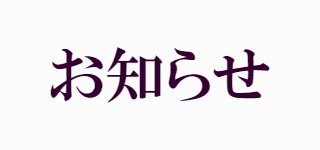Uruguay round and Marrakesh Agreement Slideshare
2022年9月8日
The Uruguay Round and Marrakesh Agreement: Understanding the Key Elements
The Uruguay Round and Marrakesh Agreement are two significant events in the world of international trade and commerce. These agreements changed the way business is conducted between countries and opened up new opportunities for trade. In this article, we will discuss the key elements of these agreements and their impact on global trade.
What is the Uruguay Round?
The Uruguay Round was a series of negotiations held under the General Agreement on Tariffs and Trade (GATT) between 1986 and 1994. The goal of the Uruguay Round was to reduce barriers to international trade and create fair trade rules among member countries. The negotiations involved over 100 countries and covered a wide range of issues, including agriculture, intellectual property, services, and textiles.
One of the key outcomes of the Uruguay Round was the creation of the World Trade Organization (WTO) in 1995. The WTO is a global organization that oversees international trade and provides a forum for negotiations between member countries.
What is the Marrakesh Agreement?
The Marrakesh Agreement is the founding agreement of the WTO. It was signed in Marrakesh, Morocco in 1994 at the end of the Uruguay Round negotiations. The Marrakesh Agreement established the framework for the WTO and set out the principles that would govern international trade.
The Marrakesh Agreement established three key bodies within the WTO: the General Council, the Dispute Settlement Body, and the Trade Policy Review Body. These bodies are responsible for overseeing the implementation of WTO agreements, resolving disputes between member countries, and conducting periodic reviews of member countries’ trade policies.
What were the key outcomes of the Uruguay Round and Marrakesh Agreement?
The Uruguay Round and Marrakesh Agreement had several key outcomes that transformed the world of international trade. Some of these outcomes include:
1. Reduced Tariffs: The Uruguay Round resulted in significant reductions in tariffs on goods traded among member countries. This made it easier and cheaper for businesses to trade across borders.
2. Strengthened Trade Rules: The Uruguay Round and Marrakesh Agreement established a set of rules for international trade that are governed by the WTO. These rules provide a clear framework for conducting business and resolving disputes.
3. Improved Access to Markets: The Uruguay Round and Marrakesh Agreement created new opportunities for businesses to access markets in other countries. This has led to increased competition and innovation in many industries.
4. Protection of Intellectual Property: The Uruguay Round and Marrakesh Agreement established new rules for protecting intellectual property, including patents, trademarks, and copyrights. This has helped to encourage innovation and creativity by protecting the rights of inventors and creators.
Conclusion
The Uruguay Round and Marrakesh Agreement were major milestones in the history of international trade. These agreements helped to create a more level playing field for businesses and opened up new opportunities for trade. By reducing barriers to international trade and establishing fair trade rules, the Uruguay Round and Marrakesh Agreement have contributed to the growth of the global economy and improved the lives of people around the world.


